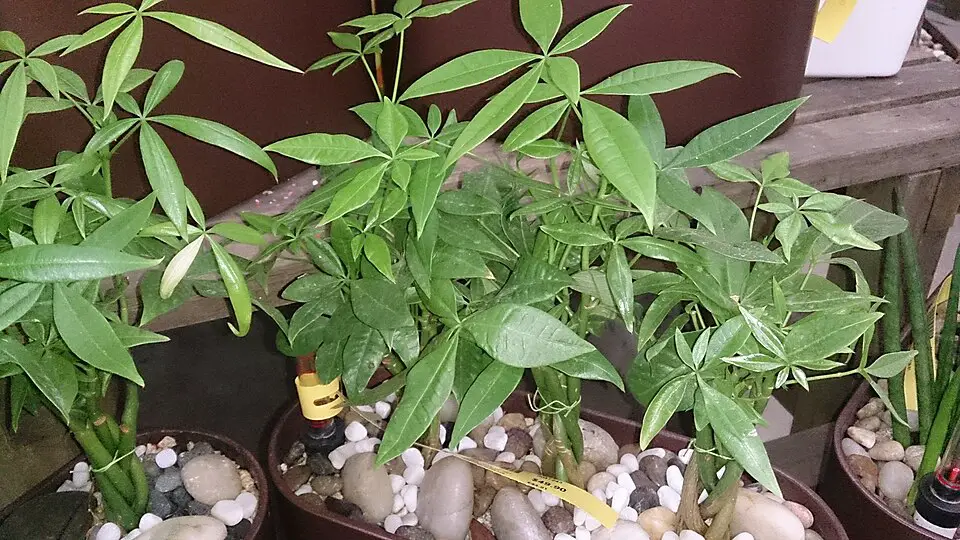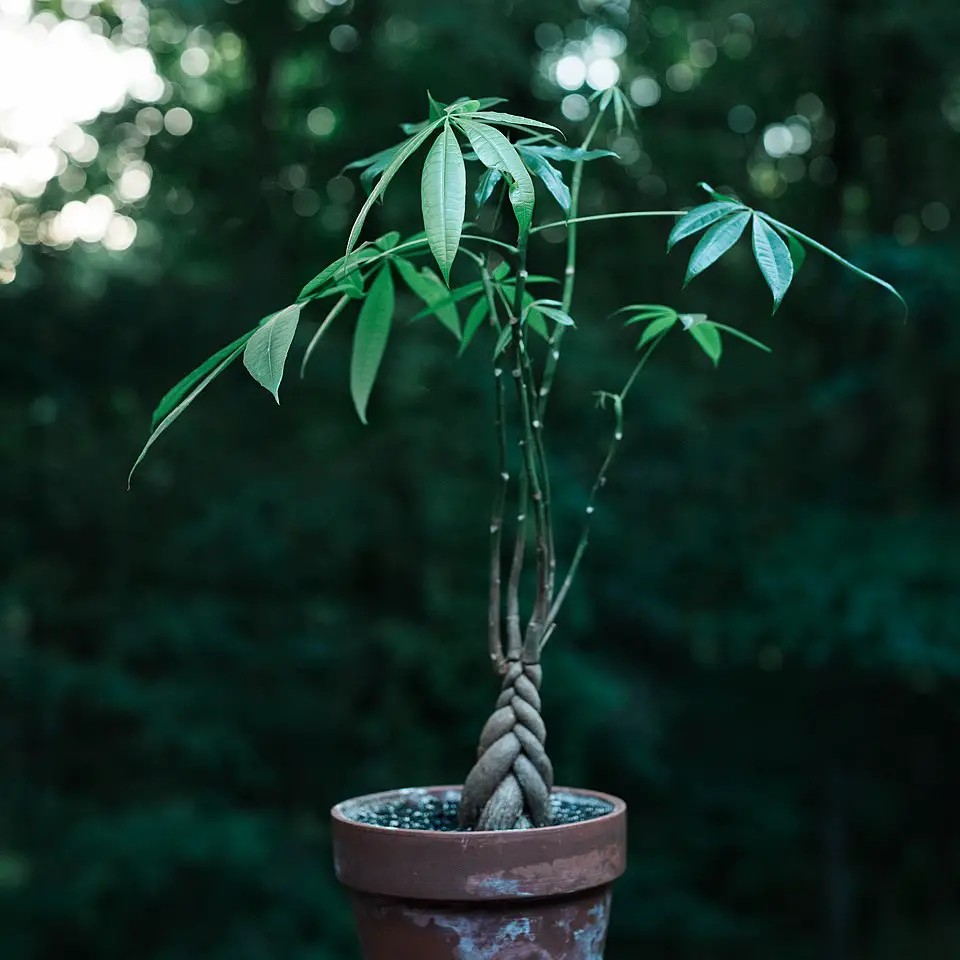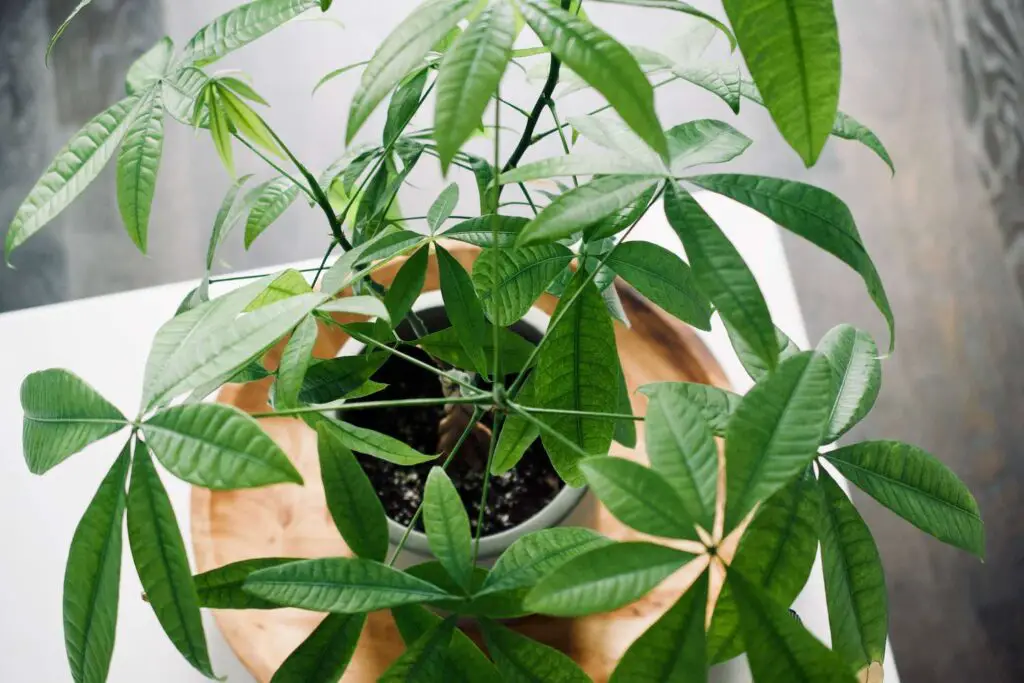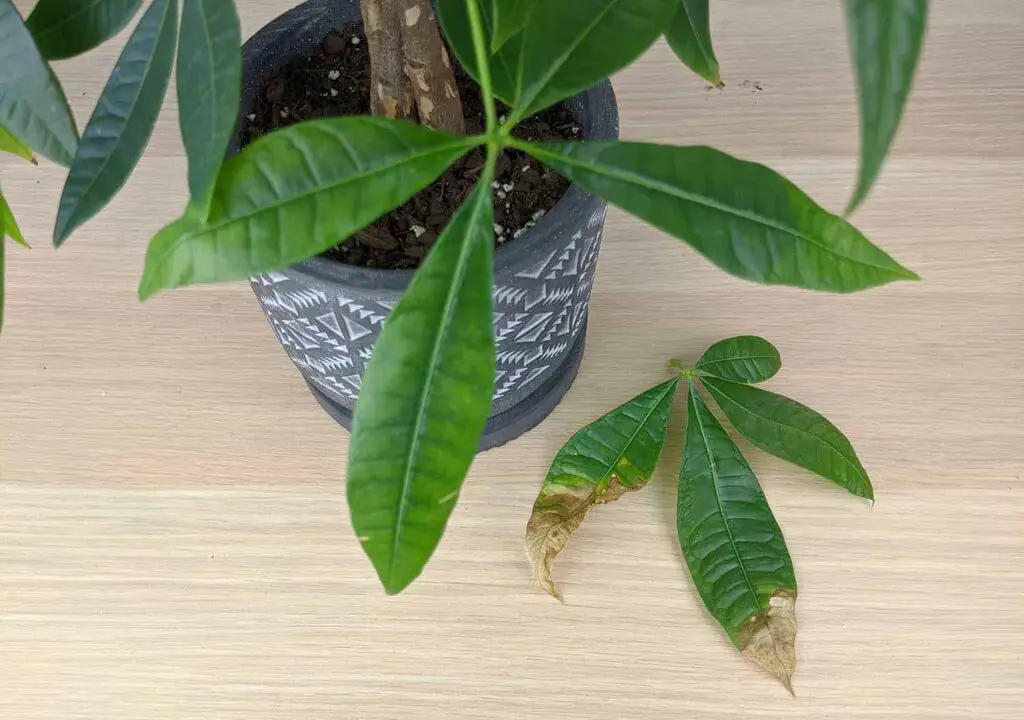Money trees, or Pachira aquatica, are not considered toxic to cats. However, ingestion of the plant can lead to mild gastrointestinal upset in some cases. Pet owners should monitor their cats around these plants and prevent them from chewing on the leaves or stems.
Understanding Money Trees
The money tree is a popular houseplant known for its attractive braided trunk and lush green leaves. It is often associated with good luck and prosperity, making it a favorite among plant enthusiasts and gift-givers alike. Originally native to Central and South America, the money tree has become a common indoor plant in many households across the United States.

In addition to its aesthetic appeal, the money tree is relatively easy to care for. It thrives in indirect sunlight and prefers a humid environment. For many people, owning a money tree is not only about beautifying their living space but also about the belief that it can bring financial success and good fortune.
Are Money Trees Safe for Cats?
As pet owners, one of the primary concerns regarding houseplants is their safety for our furry companions. Fortunately, research indicates that money trees are non-toxic to cats. This means that if your cat happens to nibble on a leaf or two, they are unlikely to suffer severe health consequences. However, this does not mean that there are no risks involved.
Cats are curious creatures, and they often explore their surroundings with their mouths. While money trees are safe from a toxicity standpoint, ingesting large quantities of any plant material can lead to digestive issues. Symptoms may include vomiting, diarrhea, or general stomach discomfort.

Signs of Gastrointestinal Upset in Cats
It is essential for cat owners to be vigilant and recognize the signs of gastrointestinal upset. If you suspect your cat has eaten part of your money tree, watch for the following symptoms:
- Vomiting
- Diarrhea
- Lethargy
- Loss of appetite
- Abdominal discomfort
If any of these symptoms appear after your cat has interacted with your money tree, it is advisable to consult your veterinarian for guidance. They can provide advice on how to manage your cat’s symptoms and determine if further intervention is necessary.
Creating a Safe Environment for Cats and Plants
To maintain a harmonious household where both your cats and plants can thrive, consider implementing some preventive measures. Here are a few tips to keep your money tree safe from curious paws:

- Place the money tree in an elevated location that is out of reach of your cat.
- Use deterrents such as citrus scents or bitter sprays on the leaves to discourage chewing.
- Provide alternative sources of entertainment, such as cat grass or designated cat-safe plants.
- Regularly monitor your cat’s behavior around the plant.
Alternatives to Money Trees
If you are concerned about having plants in your home due to your cat’s curiosity, there are several other pet-friendly options available. Some popular non-toxic houseplants include:
- Spider Plant
- Ponytail Palm
- Bamboo Palm
- Boston Fern
- Areca Palm
These plants not only provide greenery but also ensure the safety of your feline friends. By choosing the right plants, you can create a beautiful indoor garden without compromising your pet’s health.
In summary, while money trees are non-toxic to cats, it is essential to prevent excessive nibbling to avoid gastrointestinal upset. Taking preventive measures will help create a safe environment for both your plants and pets.
Understanding Plant Toxicity in Cats
To better appreciate the implications of having plants like money trees in homes with cats, it is crucial to understand how plant toxicity works in felines. Many common household plants can be harmful to cats, leading to various health issues. The severity of toxicity can range from mild gastrointestinal upset to severe poisoning.

Cats are particularly sensitive to certain compounds found in various plants. These can include alkaloids, saponins, and oxalates. Each of these compounds can affect a cat’s body differently, leading to symptoms that may vary in intensity depending on the plant involved and the amount ingested.
Common Symptoms of Plant Poisoning in Cats
If a cat has ingested a toxic plant, owners should be aware of several symptoms that may indicate poisoning. Here are some common signs:
- Vomiting: Frequent or severe vomiting is a common response to ingesting toxic substances.
- Diarrhea: Loose stools can occur as the body attempts to expel harmful toxins.
- Drooling: Excessive salivation can be a sign of nausea or irritation.
- Lethargy: A noticeable decrease in energy or alertness may indicate discomfort or illness.
- Difficulty Breathing: Respiratory distress can occur in more severe cases of poisoning.
If any of these symptoms appear, it is important to seek veterinary care immediately. Understanding these signs can help ensure the health and safety of your cat.
Safeguarding Your Home with Cats and Plants
Creating a safe environment for both your pets and indoor plants requires careful planning and consideration. Here are several strategies to ensure your home is a safe haven for your feline companions:
- Research Plant Varieties: Before bringing any new plant into your home, research its toxicity level to cats. Many online resources provide comprehensive lists of toxic and non-toxic plants.
- Educate Yourself on Symptoms: Familiarize yourself with the symptoms of plant poisoning, as mentioned earlier. Early detection can make a significant difference in treatment outcomes.
- Create a Plant-Free Zone: Designate specific areas in your home where plants are not allowed. This can help minimize your cat’s access to potentially harmful plants.
- Use Alternative Decorations: Consider using artificial plants or decorative items that mimic greenery without posing risks to your cat.
- Monitor Your Cat’s Behavior: Regularly observe your cat’s interactions with plants. If you notice them showing excessive interest in a particular plant, it may be best to remove it from the environment.
Benefits of Having Indoor Plants
Despite the concerns surrounding plant safety, having indoor plants can offer several benefits for both humans and pets. Here are some advantages of keeping plants in your home:
- Improved Air Quality: Many houseplants can filter harmful toxins from the air, improving overall air quality.
- Enhanced Mood: The presence of greenery has been shown to reduce stress and enhance mood, creating a more positive environment.
- Increased Humidity: Plants release moisture into the air through a process called transpiration, which can help maintain humidity levels in your home.
- Aesthetic Appeal: Houseplants add beauty and life to any space, making it more inviting and comfortable.
By choosing non-toxic plants and taking precautions, pet owners can enjoy these benefits while ensuring their cats remain safe and healthy.
Consulting Professionals for Plant Selection
If you are unsure which plants are safe for your cats, consulting with professionals can provide valuable insights. Local veterinarians, pet care specialists, or plant nurseries often have extensive knowledge about pet-safe plants. They can guide you in selecting varieties that will not pose risks to your pets while still beautifying your home.
Additionally, joining online forums or local pet owner groups can help provide recommendations for pet-friendly plants. Engaging with other pet owners can foster community support and share experiences related to plant care and pet safety.
Ultimately, understanding plant toxicity and implementing preventive measures allows pet owners to create a safe and inviting home for both their cats and their beloved greenery.
Common Misconceptions About Cat Safety and Plants
When it comes to the safety of cats around plants, there are many misconceptions that can lead to unnecessary worry or misunderstandings. Understanding these myths can help cat owners make informed decisions regarding their indoor plants.
Myth 1: All Indoor Plants Are Toxic to Cats
One of the most common myths is that all indoor plants pose a risk to cats. While it is true that some plants are toxic, many are completely safe. For instance, money trees and several other popular houseplants fall into the non-toxic category. It is essential to research each plant before bringing it into your home.
Myth 2: Cats Will Know Which Plants Are Safe
Another misconception is that cats instinctively know which plants are safe to chew on. While some animals may have a natural sense of caution, it is not guaranteed. Cats are curious creatures and often explore their environment through tasting different items, including plants. Therefore, vigilance from their owners is necessary.
Myth 3: All Toxic Plants Cause Serious Harm
Many people assume that any plant categorized as toxic will lead to severe health issues for their pets. While some plants can be deadly, others may only result in mild symptoms like an upset stomach. Understanding the specific toxicity level of each plant can help alleviate fears and guide appropriate responses if ingestion occurs.
What to Do If Your Cat Ingests a Non-Toxic Plant
Even if a plant is deemed non-toxic, monitoring your cat’s behavior after ingestion is essential. Here are steps to take if your cat shows interest in or consumes part of a money tree or another non-toxic plant:
- Observe Your Cat: Watch for any unusual behavior or signs of distress. If your cat appears to be acting normally, there may be no cause for concern.
- Check for Symptoms: Look out for mild gastrointestinal symptoms such as vomiting or diarrhea. Keep a close eye on your cat for a few hours following ingestion.
- Contact Your Veterinarian: If any concerning symptoms arise or persist, reach out to your veterinarian for advice. They can provide guidance based on your cat’s specific situation and health history.
- Prevent Future Incidents: To minimize the chance of further ingestion, consider relocating the plant or using deterrents discussed earlier.
Creating a Pet-Friendly Plant Care Routine
>Caring for houseplants while ensuring the safety of your cats can be achieved by establishing a routine that prioritizes both. Here are steps to create a pet-friendly plant care regimen:
- Regular Maintenance: Keep your plants healthy by watering them appropriately and ensuring they receive the right amount of light. Healthy plants are less likely to attract curious cats.
- Prune Dead Leaves: Regularly remove any dead or dying leaves. Cats may be attracted to wilted or decaying plant material.
- Avoid Fertilizers and Pesticides: When caring for your plants, opt for organic fertilizers and avoid chemical pesticides that could be harmful if ingested by your cat.
- Create a Routine Inspection: Regularly check your plants for signs of disease or pests. This not only keeps your plants healthy but also prevents any potential hazards for your pet.
Understanding Your Cat’s Behavior Around Plants
Recognizing and understanding your cat’s behavior around plants can help you manage their interactions more effectively. Here are some behaviors to watch for:
Curiosity and Exploration
Cats are naturally curious animals. They may sniff, scratch, or chew on plants as part of their exploratory behavior. Providing alternative stimulation, such as toys or climbing structures, can redirect their curiosity away from your plants.
Playful Behavior
Your cat might see the leaves of a plant as a potential toy. Cats often engage in play behavior that involves batting at or pouncing on various objects. To minimize this behavior, ensure they have plenty of engaging toys that fulfill their playful instincts.
Seeking Attention
If a cat feels neglected or bored, they may turn their attention to the plants in their environment. Spending quality time with your cat through playtime or affection can reduce their desire to interact with houseplants.
By understanding these behaviors and implementing strategies to manage them, cat owners can create a harmonious living space that accommodates both their pets and their love for indoor gardening.
Additional Considerations for Cat Owners
>Understanding the dynamics of your household with both plants and cats requires ongoing attention. Beyond just knowing which plants are safe, there are other considerations that can help maintain a balanced environment. Here are some additional points to explore:
Introducing New Plants Gradually
When adding new plants to your home, it is wise to introduce them gradually. This allows you to monitor your cat’s reaction and behavior around the new addition. If your cat shows undue interest or begins to chew on the new plant, you can take appropriate steps to manage their interactions.
Educating Family Members
It is important that all family members are informed about which plants are safe and which are not. This includes children, who may not understand the potential dangers of certain plants. Teaching them to respect the plants and the pets can create a safer environment for everyone.
Using Technology for Monitoring
For more tech-savvy pet owners, there are various devices available that can help monitor your cat’s activities. Cameras or motion sensors can provide insights into your cat’s behavior when you are not around. This information can help you identify patterns and make decisions about plant placement and safety.
Regular Veterinary Check-ups
Routine veterinary visits are essential for maintaining your cat’s health. Discuss any concerns regarding plant safety with your veterinarian during these visits. They can provide tailored advice based on your cat’s medical history and behavior.
Final Thoughts
In conclusion, money trees are non-toxic to cats, making them a safer option for pet owners who wish to incorporate greenery into their homes. However, it is vital to remain vigilant and ensure that cats do not excessively nibble on any plants, even those deemed safe.
By understanding the behaviors of cats, recognizing the potential risks associated with various plants, and implementing preventive measures, pet owners can cultivate a beautiful indoor garden while ensuring the safety of their feline friends. Education, observation, and proactive strategies play crucial roles in harmonizing the coexistence of plants and pets.
As a responsible pet owner, prioritizing your cat’s health while enjoying the benefits of indoor gardening is achievable with careful planning and informed choices. Remember that every cat is different; what works for one may not work for another. Always tailor your approach to fit the unique personality and needs of your feline companion.
With the right knowledge and precautions, both your money tree and your cat can thrive together in a happy and healthy home.
